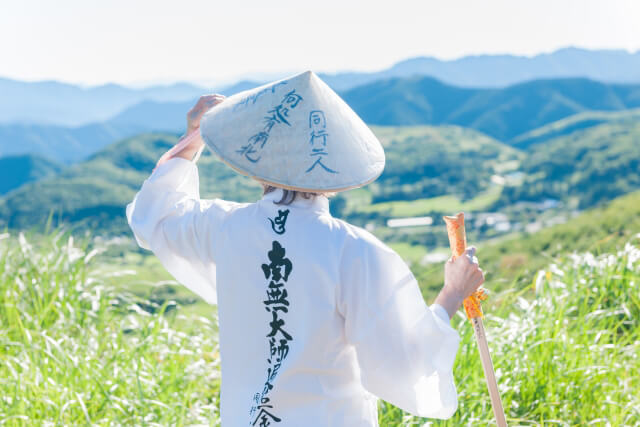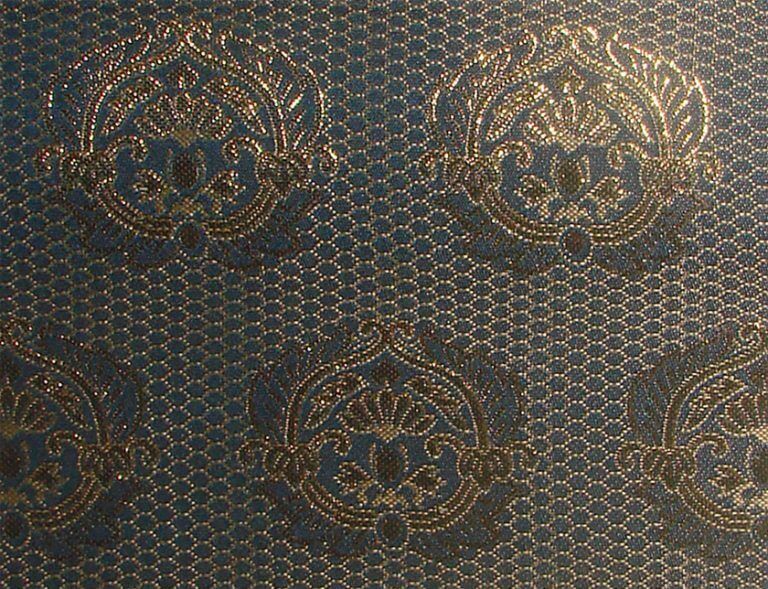A Canadian Pilgrim’s Journey to the Shikoku 88 Temples, Commemorated with a Kakejiku Scroll

The Shikoku 88 Temple pilgrimage is a sacred journey that offers pilgrims an opportunity to cleanse their minds and reflect deeply on their lives.
For many, deciding how to preserve the memories of such a journey is an important decision.
In this article, we share the story of a Canadian customer who, after completing the Shikoku 88 Temple pilgrimage, entrusted us with the creation of a kakejiku to commemorate their experience.
Through our interactions with this customer, we were reminded of the profound significance that kakejiku mounting can hold.
Our Relationship with the Customer Began in 2023
Our connection with this customer began in August 2023, when we received an inquiry via email.
The customer was getting ready for their Shikoku pilgrimage when they found an article on our website about a Swiss customer who had also completed the pilgrimage and had a kakejiku made by us to commemorate it.
Inspired by this story, they decided they too wanted to create a kakejiku to commemorate their journey.
The customer asked for advice on which type of nōkyōjiku (stamp scroll) to use.
We carefully explained the differences between the various types, including the variations in depictions of Kōbō Daishi and the surrounding decorations.
We also mentioned that some scrolls feature embroidered representations of Kōbō Daishi rather than painted illustrations.
We directed the customer to our website, where they could view images of different fabric designs and see what the finished kakejiku might look like.
Our goal was to help the customer fully envision the final product so they could make informed decisions.
Visiting Our Shop After Completing the Pilgrimage
In May 2024, shortly after Japan’s Golden Week holiday, the customer and their spouse visited our shop.
They had just completed their pilgrimage and brought with them their nōkyōjiku scroll, filled with stamps from the 88 temples.
During the visit, the customer shared many stories from their pilgrimage.
One story that stood out was how, during the journey, the case holding their nōkyōjiku was damaged. Rather than let this stop them, the customer repaired the case themselves and continued their journey. This story illustrated their determination to see the pilgrimage through to completion, despite the challenges they faced.
The base of the nōkyōjiku they brought was a luxurious version, featuring an embroidered image of Kōbō Daishi.

The customer was particularly fond of this base, and we were pleased that our earlier advice had been helpful in their selection.

Selecting the Perfect Fabric
When it came to choosing the fabrics for the kakejiku, the customer first considered our Buddhist mounting pattern No. 17, which uses “Genbu” fabric for sotomawashi outer enclosure.

The calm, understated elegance of the outer fabric was to their liking, but they were unsure which fabric to use for the nakamawashi inner enclosure.
They debated between the gold fabric we typically use for this pattern and a more vibrant red brocade known as “Akatomita.” After much consideration, they concluded that the red fabric was too intense and created a “busy” feeling.

Ultimately, they decided on the standard gold fabric for the inner enclosure, and when the decision was made, the customer smiled and said, “This is perfect!”

Their attention to detail and thoughtful consideration of every element demonstrated just how deeply the memories of their pilgrimage were woven into the base.
A Special Request: The “Shin no Shin” Mounting Style

While we usually recommend the “Shin no Gyo” style when using “Genbu” fabric, the customer expressed a strong preference for the more formal “Shin no Shin” style.
This particular style is highly traditional and rarely chosen, even in Japan.
We learned that the customer had extensively researched the various styles on our website before selecting “Shin no Shin.”
Their knowledge and care in choosing this less common style impressed us greatly. It’s a style that even many Japanese people are unfamiliar with, making the customer’s informed choice all the more remarkable.
The Completed Kakejiku and the Customer’s Gratitude
After several months of careful craftsmanship, the kakejiku was completed.
The combination of the luxurious “Genbu” fabric with the standard gold inner enclosure, mounted in the “Shin no Shin” style, resulted in a truly elegant kakejiku that fully met the customer’s expectations.
We promptly shipped the kakejiku to the customer’s home in Canada.
Shortly after receiving it, the customer sent us a heartfelt message: “It’s so beautiful. I wish to thank all your craftsmen and you for making a treasured reminder of my pilgrimage. It will hang in my house with pride for many years.”
Their words filled us with pride and joy, knowing that we had helped to preserve such a meaningful memory.

A Message to Future Pilgrims of the Shikoku 88 Temples
The Shikoku 88 Temple pilgrimage is not just a journey—it is a profound challenge that cleanses both body and spirit. The stamps collected along the way serve as a testament to this sacred journey.
At our company, we take great pride in helping pilgrims preserve these precious memories through kakejiku scroll mounting.
Our dedication to craftsmanship ensures that your kakejiku will beautifully and permanently commemorate your pilgrimage.
If you have any questions or would like to consult with us about kakejiku mounting, please feel free to reach out at any time.
If you would like to know more about how a Shikoku 88 pilgrimages kakejiku is produced, please kindly watch this video.






